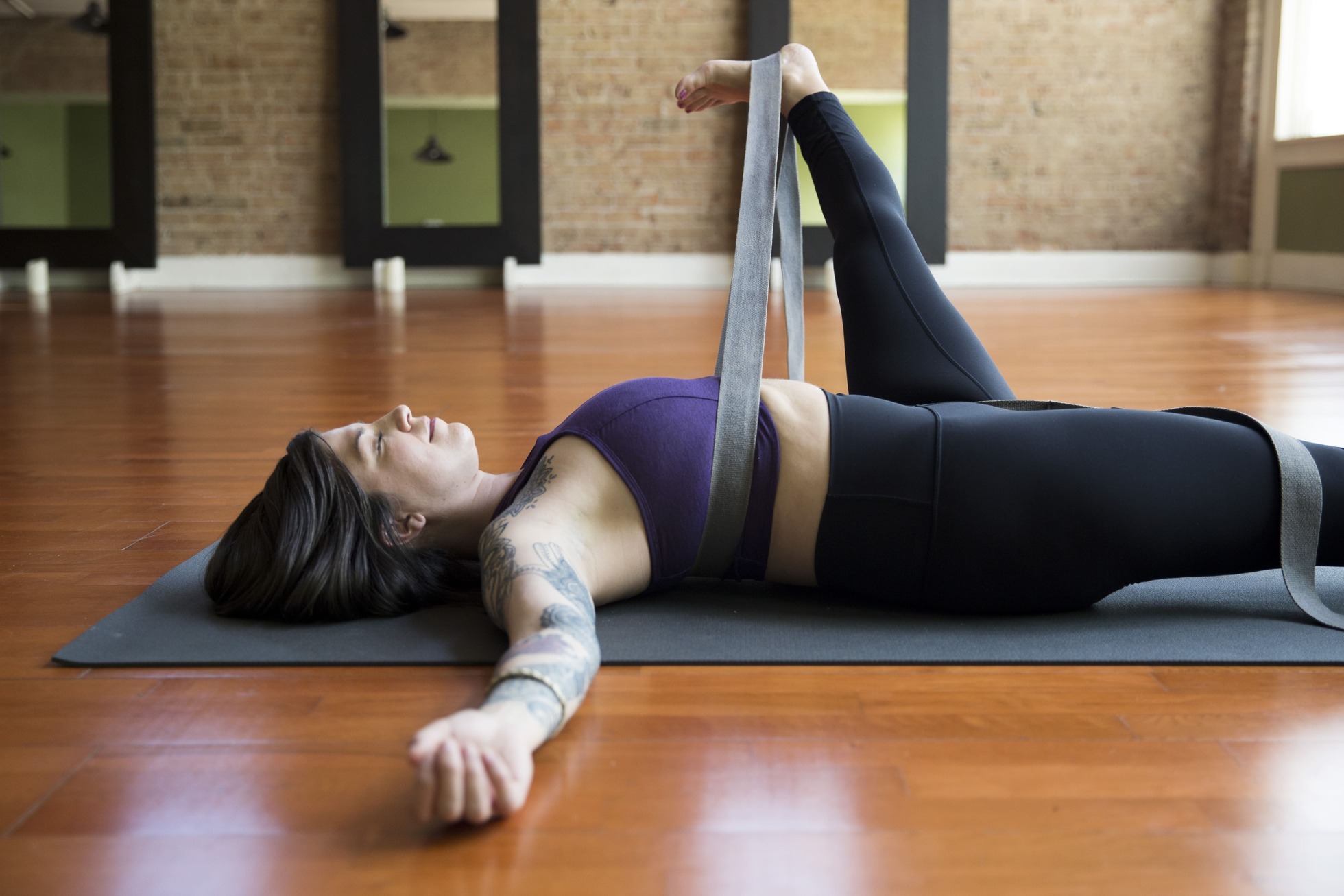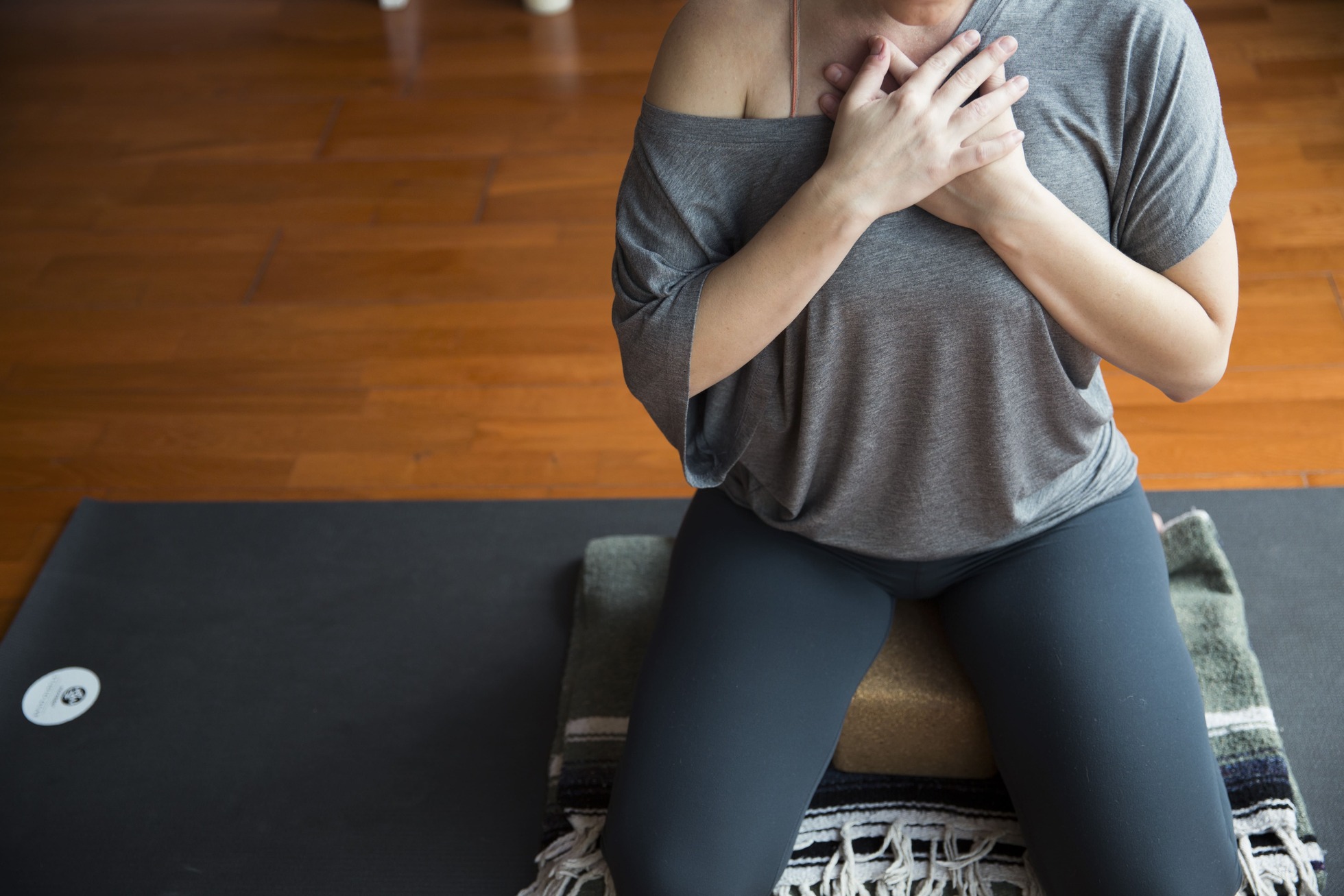
How Yoga Can Help Reduce Anxiety
March 31, 2023
Do you ever experience those moments when you seem unable to stop worrying? Do you feel apprehensive, anxious, and nervous? Whether those emotions are fleeting or persistent, you’re not alone!

According to recent statistics, one in five adults in the United States actually suffers from anxiety. That makes anxiety one of the most common mental health challenges in the country. Serious as this may sound, feeling anxious from time to time doesn’t mean you’re suffering from a condition. It’s perfectly normal to feel nervous about challenges in your day-to-day life.
Practicing yoga can help reduce or even eliminate fleeting feelings of anxiety. In addition, yoga can also be used as part of a treatment plan for more serious, diagnosed anxiety disorders. Here’s how it works.
A Closer Look at How Yoga Reduces Anxiety
Practicing yoga regularly strengthens the connection between our minds and our bodies. By combining physical poses with breathing exercises and relaxation or meditation, yoga allows you to regain control of your stress levels and manage feelings of anxiety.
What to Do if You Experience Anxiety
Everyone feels nervous or anxious sometimes. Getting ready for a job interview, preparing a presentation for an important client, or even hosting a dinner party for the entire family is enough to raise your anxiety levels.
For most of us, these emotions are temporary, and yoga can help you regulate them effectively. However, if your feelings of anxiety start to become excessive and uncontrollable, it may be time to seek professional help. One of the tell-tale signs that you could be suffering from an actual anxiety disorder is that your emotions are interfering with your life. At this stage, getting a proper diagnosis and making a treatment plan is critical.
But that doesn’t mean that yoga is no longer beneficial. Studies have shown that yoga can be highly effective when it comes to treating anxiety. Recent research by New York University’s Grossman School of Medicine explored the connection between yoga and anxiety. The study found that yoga was “significantly more effective” in treating Generalized Anxiety Disorder (GAD) than standard education on how to manage stress.
The scientists noted that yoga was an excellent option for those who are looking for an alternative to conventional treatment, such as medication. Choosing yoga as a treatment option not only allows you to avoid unwanted side effects of anti-anxiety medication. But establishing a yoga practice can also improve your overall sense of mental and physical well-being, further reducing your anxiety.

Yoga Practices to Reduce Anxiety
When you’re new to yoga, it’s easy to focus solely on the physical elements of the practice, our asanas. If you want to use your yoga practice to reduce anxiety, however, it’s important to take a more holistic approach. Asanas, breathing exercises or pranayamas, and meditation all have a role to play in improving your feelings of being overwhelmed or nervous.
Breathing exercises are especially powerful in alleviating anxiety. Here are two simple options to try. With either, you should start to experience results within a few minutes of practicing. Used regularly, they will be highly effective at managing anxiousness and stress.
1. Deep Yogic Breath
Start by sitting or lying down in a comfortable position. Bring one hand to your belly and put the other hand on your chest. Now, take a deep breath: inhale through your nose and feel your stomach rise. The hand on your chest should not move. Exhale slowly, allowing your belly to return to its natural position.
Continue for a few minutes. Throughout your belly breathing practice, your chest should remain neutral. Keeping one hand there is a great way of checking for movement.
2. Alternate Nostril Breathing
Start by sitting in a relaxed position, straighten your spine, and close your eyes. Place your right thumb on the right nostril and your ring finger on the left nostril. Your forefinger and middle finger could either be curled inward as if you were making a fist, or they could rest between your eyebrows.
Close your right nostril with your thumb and breathe in from the left nostril. Then close your left nostril with your ring finger and exhale through your right nostril. Inhale again on the right, then close the right and move back to your left and exhale. Inhale again on the left and continue like that.
Continue this exercise for at least five minutes, keeping your breaths natural and easy. The goal is to bring your focus to your breath and balance both sides.
Have you tried either of those exercises or both? Let us know how they’re working for you!
Finding Yoga Lessons to Reduce Anxiety in Dallas
Uptown Yoga instructors are happy to incorporate breathing exercises and other elements in their classes to help you reduce anxiety. Don’t hesitate to talk to your instructor, even if you’re attending a group yoga lesson in Texas. Learning how to manage feelings of nervousness benefits everyone in the room.
If you’d like to tailor your practice more specifically toward anxiety management, private yoga lessons are an excellent option. Talk to us through 214-965-9642 or reach out to our email at [email protected] to discuss the best option for you.




